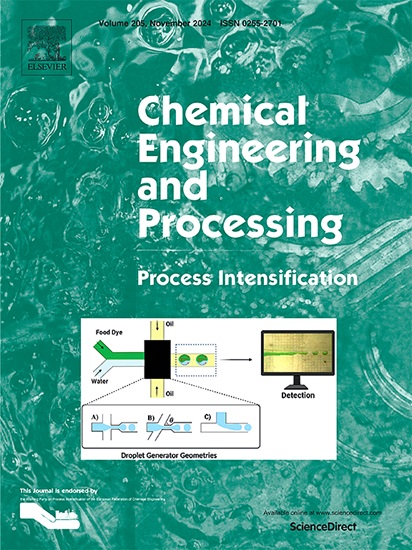Modeling and optimization of reverse salt diffusion and water flux in forward osmosis by response surface methodology and artificial neural network
IF 3.8
3区 工程技术
Q3 ENERGY & FUELS
Chemical Engineering and Processing - Process Intensification
Pub Date : 2025-02-01
DOI:10.1016/j.cep.2024.110140
引用次数: 0
Abstract
Forward osmosis is an emerging technology for desalination and wastewater treatment, which is hindered by reverse salt diffusion into the feed. This study experimentally investigated reverse salt diffusion, and modeled and optimized using response surface methodology (RSM) and artificial neural network (ANN). The Pareto analysis showed that draw solution electroconductivity (EC), feed solution EC, interaction between the flow rates of feed and draw solutions, and interaction between the flow rate of draw solution and operating time were the most effective parameters of Na+ reverse diffusion model in decreasing order. For the water flux model, the most effective parameters were draw solution EC, draw solution flow rate, feed solution EC, interaction between draw solution flow rate and feed solution EC, and between feed solution flow rate and time. The optimized operating conditions in FO were 1.07 L/min feed flow, 1.41 L/min draw flow, 50.54 mS/cm draw EC, 5.02 mS/cm feed EC and 4 h of operation. Both RSM and ANN models effectively simulated Na⁺ reverse diffusion and water flux with R² values of 0.948 and 0.958 and 0.984 and 0.968, respectively. Overall, the ANN models exhibited slightly better performance and are recommended for the simulation and modeling of membrane processes.
求助全文
约1分钟内获得全文
求助全文
来源期刊
CiteScore
7.80
自引率
9.30%
发文量
408
审稿时长
49 days
期刊介绍:
Chemical Engineering and Processing: Process Intensification is intended for practicing researchers in industry and academia, working in the field of Process Engineering and related to the subject of Process Intensification.Articles published in the Journal demonstrate how novel discoveries, developments and theories in the field of Process Engineering and in particular Process Intensification may be used for analysis and design of innovative equipment and processing methods with substantially improved sustainability, efficiency and environmental performance.

 求助内容:
求助内容: 应助结果提醒方式:
应助结果提醒方式:


